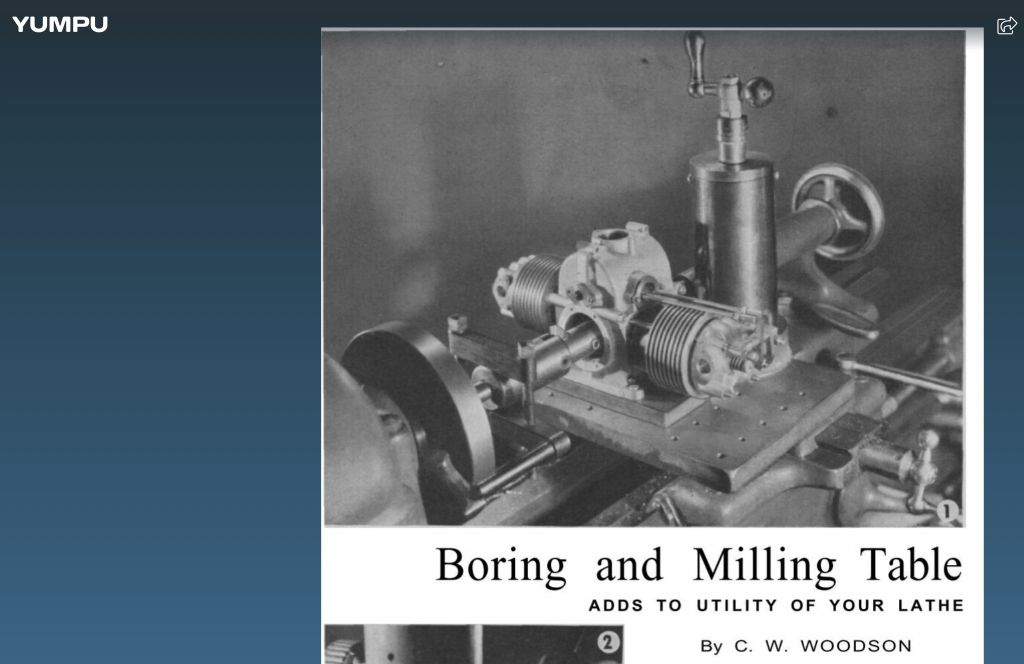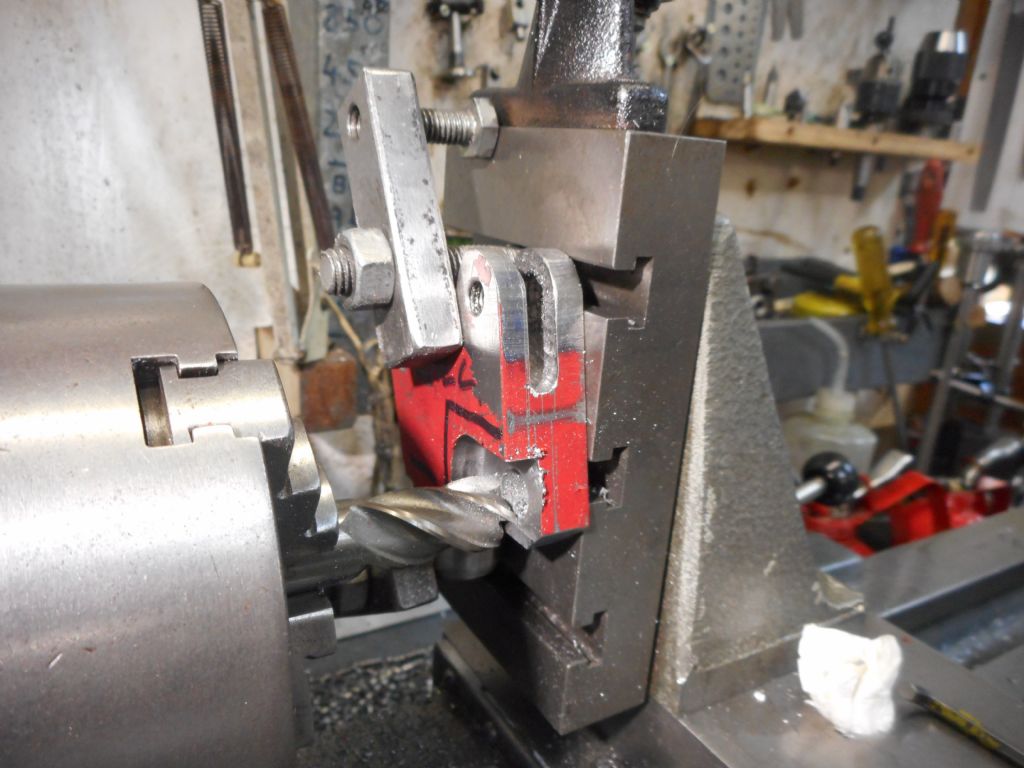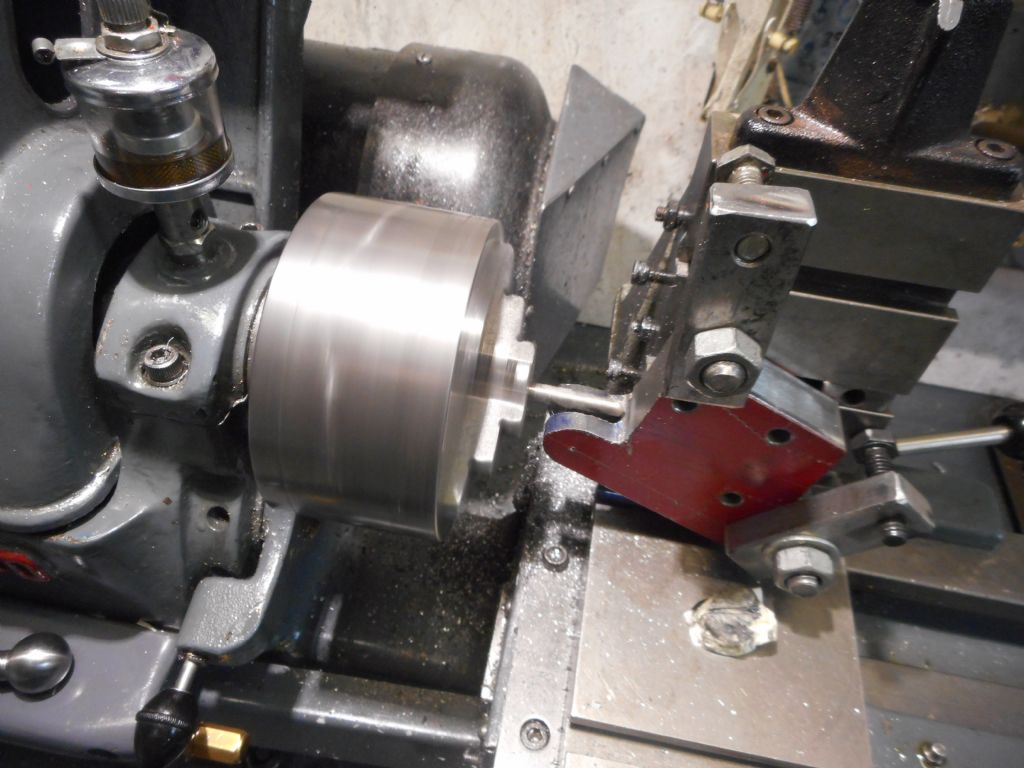Picking up on Hoppers comment about screw jacks and running with it I wonder if having the boring table simply jacked up and down guided by stout columns attached to a fixed under plate might be a better way.
The 6" Atlas Craftsman Dennis uses has much more room above the cross slide than the usual run of Model Engineer home workshop lathes we are used to. Look at the lower pictures here to see :- **LINK**
http://www.lathes.co.uk/atlas/page4.html
It would seem feasible to attach a stout square or rectangular plate to the cross-slide with a cylindrical column at each corner with the boring table proper running up and down it. I guess something in the 1" to 1 1/2" diameter range would work for the columns. Maximum stability would need some sort of locking arrangement to securely lock the table to the columns after setting. Something a simple as a slot and pinch bolt in the side of a guide hole should do.
Simplest way to lift things would be a fine thread bolt close to each column. Turns counting would get you close to even adjustment. Add a hole for a depth micrometer, vernier or digital gauge to measure things would let you set each corner just so. It would seem best to have some way of locking the table down onto the jack before clamping up the pinch bots or whatever. Probably such provision is essential if downwards adjustment is to be reliable.
Plenty of ways to refine the idea or modify to suit components on hand and/or economical to purchase. Putting a fine thread on the guide columns with suitably calibrated lift nuts for direct setting sounds attractive. However such will be hard to engineer if absolutely positive setting is needed and clamping the boring table to the column after setting for maximum stability difficult.
In my working days I built a large system of this ilk using the Thor Labs 2" column / rod system and aluminium breadboards with simple screwed rods for jacks. The carriers riding on the column acted as guide bushes and, being something over 3" long, made the whole thing incredibly stable.
Clive
Edited By Clive Foster on 08/12/2022 13:52:08
ega.







